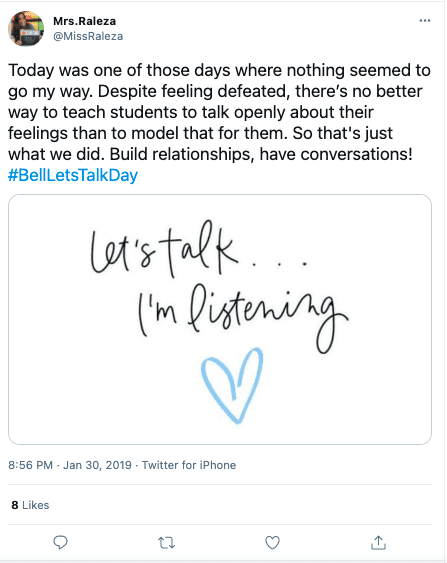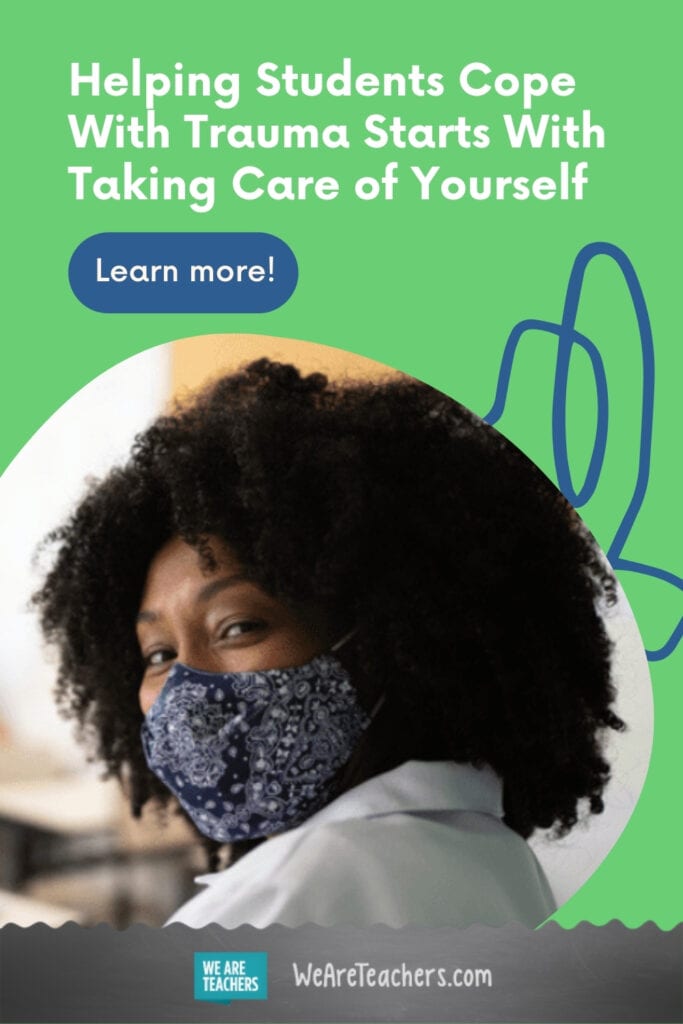How many nights have you gone home or logged off after teaching, only to continue thinking about your students? It probably happens all the time. Now, how many nights have you spent thinking about your own well-being or practicing teacher self-care? Most teachers would say not nearly as many.
When thinking about trauma and stress in schools, the focus is often on students. However, teachers also deal with trauma.
“We become teachers because we care about our students so deeply,” a teacher from Florida recently told Buzzfeed. “And I have had a hard time even allowing myself to fully process some of my stuff because I’m processing a lot of my students’ stuff.”
“If you take care of the teachers, they will take care of the children.”
Self-care is not only healthy for teachers; it also indirectly helps students.
“If you take care of the teachers, they will take care of the children,” Meisha Porter, the chancellor of New York City Public Schools, said in an interview, where she discussed the trauma of teaching during the pandemic.
When educators have their physical, mental, and emotional needs met, they have the energy, determination, and patience to overcome challenges. Then, they can help their students do the same.
To build resilience in students, the first step is to build resilience in educators, says Caelan Soma, PsyD, chief clinical officer with Starr Commonwealth, an organization that offers resources and professional training to help schools build trauma-informed, resilience-focused communities, beginning with teacher self-care.
“This is one of the biggest things I think about,” says Soma. “One of the main protective factors for kids is being around adults who are well. If you are well, you’re going to have more kids in your classroom being well.”
Practice self-care is challenging for teachers, but it’s more important than ever.
Maintaining wellness is especially challenging for educators. Our jobs are constant, requiring near constant action during the school day and hours of work outside of the classroom to make it work. Because of this, many of us don’t spend as much time as we should taking care of ourselves. We don’t socialize with our friends on the weekends because we’re busy grading. We skip the gym because we’re exhausted after a long day of teaching. We get fast food for dinner because having to make one more decision feels impossible.
Still, Soma says it’s possible—and critical—to focus on teacher self-care.
Here are five ways to create a classroom environment that focuses on your own well-being in addition to that of your students:
1. Confide in your colleagues when you’re having a tough day.
Teachers, by their nature, are very giving. While that’s important, there’s also a need to normalize the fact that educators must take care of themselves. One way to do that is by talking with colleagues about how practicing self-care isn’t a sign of weakness, but strength.
“A lot of teachers feel like they cannot share how they are really feeling because they think they are going to lose their jobs,” Jeannette Sandoval, a psychotherapist and the founder of Wellducation, told the Los Angeles Times. “We need to normalize the stress and anxiety and not be shamed for it…”
Teacher Renee White summed it up perfectly with this post on Twitter.
“Fellow educators, I don’t know about you, but this is hard for me. I am constantly up late at night working on something even when we are technically off of work. I think I need to keep this in mind & purpose to make myself rest a little.”
2. It’s OK to let your students know you’re struggling too.
It’s alright to let kids know that teachers sometimes struggle too. This normalizes the experience. At the beginning of a class, say, “I don’t know if I’m ready for this. Let’s all take a deep breath and close our eyes,” Soma suggests. This allows the teacher a moment of mindfulness while giving students the same benefit.
Fourth grade teacher Mrs. Raleza shared on Twitter how she models talking openly about feelings when she’s having a tough day. It helps build relationships with students while showing them positive ways to cope with their challenges.
3. Ditch the desks and make your classroom more comfortable for everyone.
Anything that helps kids and teachers feel comfortable, safe, and less stressed fosters resilience and is beneficial to academics.
“One of the things I love best about #distancelearning is that students can sit wherever they want to. If a student works best sitting on the floor or on a couch, it works for me,” one teacher shared on Twitter. “Also, if your pet wants to sit on your lap… even better.”
Teaching in the classroom? Consider flexible seating to help you and your students decrease stress and increase focus and engagement. Here are 21 teacher-tested flexible seating options, including wobbler stools, scoop rockers, lap desks, and more.
4. Share surprise pick-me-up notes with your fellow teachers.
Teaching can be an emotionally taxing profession. While talking to friends and spouses might be helpful, talking to other educators lets teachers and administrators vent, but also brainstorm solutions and exchange advice.
Challenge fellow teachers to check in on each other by leaving a surprise pick-me-up or kind note. Encourage them to share the ways that they practice teacher self-care. One educator on Twitter shared a simple post that helped her set boundaries with work and transition into time at home.
Just like building community among students helps them feel connected, strengthening the relationships among teachers helps them build resilience. There’s a lot of comfort in knowing that your fellow educators are there for you! If you need ideas for where to start, check out these things teacher friends do for one another.
I’m sharing this as I felt like it helped me seeing it today. To all of my teacher friends out there – you’re all AMAZING ❤️ #teacherssupportingteachers pic.twitter.com/uIZl8QJ82i
— Miss G. Harcus (@teentoteacher) October 22, 2020
5. Designate wellness-themed days in your classroom.
Some portions of teacher self-care need to be done outside school hours. However, educators can also practice self-care in the classroom, which has the added benefit of leading by example for your students.
“It’s not like a teacher has to do their own self-care before they get into the classroom,” says Soma.
The Los Angeles Unified School District has a program called Resilience Daily. Through themed days like Grati-Tuesday and Wellness Wednesday, the program encourages teachers to create self-care opportunities for themselves and their students.
Need ideas? It can be as simple as creating a classroom culture where it’s acceptable and encouraged for you and your students to take a water break, have a snack, or go on a walk outside. You can also try these 5 calming, mind-body exercises with your students.
Today is #SHHSWellnessWednesday! Wear your favorite fitness gear and join us from 12pm-1pm for some ZOOMba and a nutritious bite demonstration. Donations are welcomed:
Credit Card: https://t.co/PtL6BV1LH4
Payroll deductions: https://t.co/gVJRSTgxsO #SharingBringsHope pic.twitter.com/0wbuph47wp— Student Health and Human Services (@SHHSLausd) March 10, 2021
Looking for more ways to practice teacher self-care and build resilience in yourself and your students?
Starr Commonwealth offers educators tools to help empower both you and your students to build resilience. Check out these everyday these everyday trauma-informed activities and interventions you can try in your classroom.




